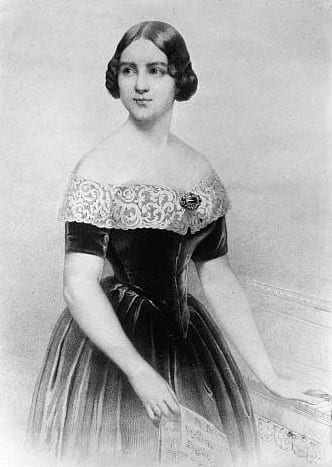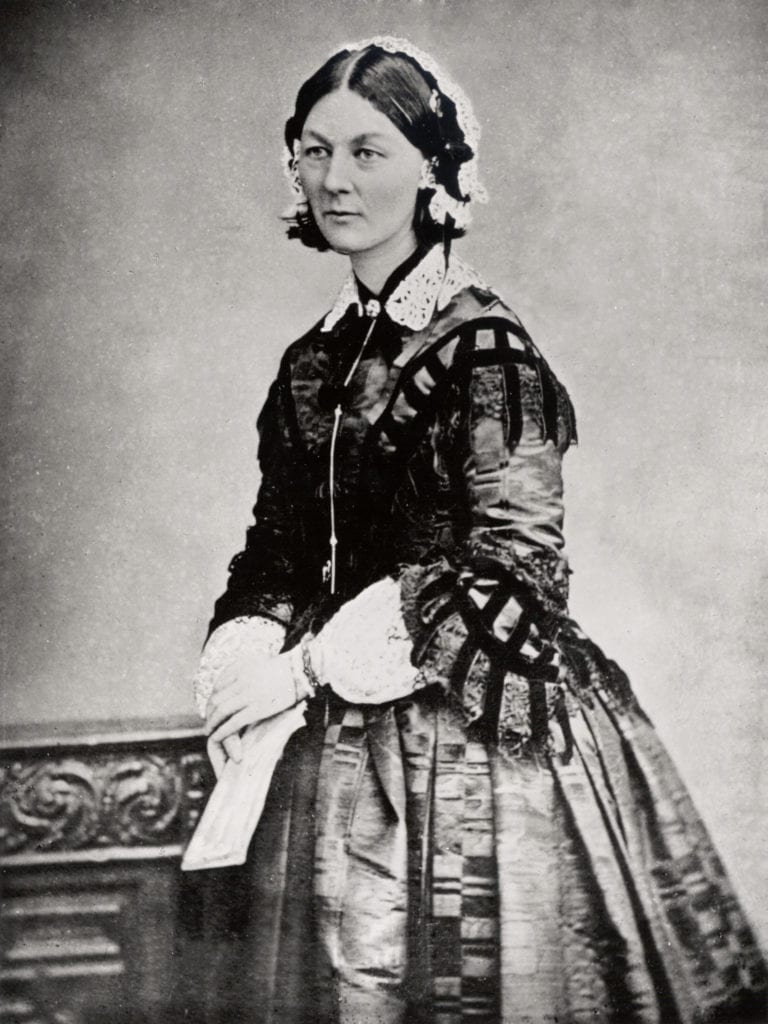Inga Lewenhaupt
Einar Perman
Stockholm, Sweden
 |
| Jenny Lind standing at a keyboard. Library of Congress, Bain Collection. Accessed via Wikimedia. Source |
Two remarkable women were born in the same year two centuries ago: Jenny Lind (1820-1887) and Florence Nightingale (1820-1910). Both became world famous, Jenny Lind for her beautiful singing voice, Florence Nightingale for her pioneer work in nursing. Both were deeply religious and wanted to make the world a better place, Jenny Lind through donations from her singing, Florence Nightingale through her dedication to nursing. Jenny Lind knew Florence Nightingale and greatly supported her causes.
Jenny Lind had a poor and insecure childhood. When she was born her mother was not married, but her parents eventually married when Jenny was fourteen. Her extraordinary voice had been noted early. The singing master of the Royal Theatre in Stockholm helped her to be enrolled as a pupil at the Royal Theatre School before the age of ten. After her breakthrough as an opera singer at the age of seventeen, she saw it her duty to use her God-given voice to do good for people living in bad circumstances.
Already in her early twenties, Jenny Lind became a sensation, singing opera and concerts in several European countries. Many contemporary composers wrote in glowing terms about her singing (Berlioz, Brahms, Chopin, Mendelssohn, Verdi, and others). She became known as the Swedish Nightingale and was welcome even at royal courts. She early on befriended Queen Victoria and her consort Albert. In 1847 she caused mass hysteria at her first appearance at Her Majesty’s Theatre in London. Florence Nightingale was there. She was swept along with the celebrations of the Swedish Nightingale and wrote in her diary that ”to describe her, one actually needs a quite new language.” That Jenny was also called Nightingale was of course special.
In 1850-52 Jenny Lind embarked on two big tours in North America. The first was produced by the showman P.T. Barnum, the second under her own management. While in America she married (1852) Otto Goldschmidt, her pianist. They had three children.
Through her European singing engagements and American tours Jenny Lind had amassed an immense fortune. It is difficult to decide how much she had earned and what this would correspond to today. Her income only from her first 93 concerts in the US was $176,675 (today about $6 million). Over many years she donated most of her fortune to charitable causes. Already in 1848-49 she observed the need for hospitals in England and donated 8,900 GBP (today about $1.5 million) to hospitals in Brompton, Manchester, Birmingham, Liverpool, Norwich, and Worcester. The money was sufficient for extensive care as well as for two new buildings. She was generous to many people in need and also started funds for education in music and art. She gave her last concert 1883. In later years she lived with her family in South Kensington, London, and at a summer estate near Malvern in Worcestershire. She died in 1887 at age 67.
 |
| Three Quarter length portrait of Florence Nightingale. circa 1860. Accessed via Wikimedia. Source |
Florence Nightingale came from an affluent English upper-class family. She was determined to get a good education, resisted her mother’s social ambitions, and eventually attended a nursing school in Germany. Back in England she became superintendent of the Hospital for Invalid Gentlewomen. Her life changed in 1854 when she was recruited to organize medical care for soldiers of the Crimean War at the military hospital in Skutari outside of Istanbul. She started with thirty nuns and nurses. Conditions were horrible. Through extensive sanitary measures and better organization, the death rate sank remarkably. She used funds from the military and also her own money. She became known as ”the lady with the lamp.” Her ability was eventually recognized by her superiors and she went on to reorganize much of nursing and health care in England.
The two women were introduced to each other by their mutual friend, the English Minister of War, Sidney Herbert. It is beyond doubt that all of Florence Nightingale’s experiences in the cholera-infected hospitals had a great impact on Jenny Lind. This made her give more and more money to hospitals and nursing homes in England and Sweden.
While Florence was still in Turkey, Jenny Lind interrupted her tour of fifty charity concerts in England and Scotland to give a special concert in Exeter in aid of the newly founded Nightingale Fund.
Afterwards she donated 1,872 GBP (today about $300,000) to the fund. This was a major contribution to the start of the first nursing school in the world. It was named the Nightingale School of Nursing at St. Thomas Hospital in London and started in 1860.
Two years later Florence Nightingale gave Jenny Lind and her husband a bust of Queen Victoria. This meant a great deal as Queen Victoria had always been very supportive of both Jenny Lind and Florence Nightingale. As a more private gift, Jenny Lind received a small locket with Florence Nightingale’s portrait inside and an inscription with thanks for her help, a clear instance where one nightingale helped the other.
At Jenny Lind’s death in 1887 Florence Nightingale mentioned in her letter of condolence about “her early contribution to a foundation that has developed into a large network of educated nurses . . .”
Through their pioneering work both Nightingales succeeded in their ambition to create and organize better nursing and health care, especially in England. Both were intelligent and strong-willed. They raised the status of the nursing profession and became inspirations for other women. They fought for the education of women and their right to be paid for work outside the home. Nurses should be paid well and not just seen as self-sacrificing angels.
INGA LEWENHAUPT, Ph.D., Chair of the Jenny Lind Society, former Museum Director of the Drottningholm Theatre Museum/Swedish Theatre Collections.
EINAR PERMAN, MD, PhD, is a retired physician living in Stockholm, Sweden. He is a member of the Hektoen International editorial board.
Highlighted in Frontispiece Volume 12, Issue 4 – Fall 2020

Leave a Reply